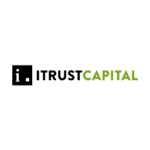If you have read much on bitcoins or the blockchains underneath them, then you’ll likely have heard of the distributed ledger.
It is a fundamental part of how this system works, and actually making the distributed ledger technology (or “DLT”) function was one of the major breakthroughs that spurred cryptocurrency.
But What Is a Distributed Ledger?
In a nutshell, a distributed ledger is a series of identical records that are shared across a network. The records are generally organized in a single database, and they can be spread across computers separated by anywhere from just a few feet up to a few continents as long as they all duplicate the same data. Each site is called a “node,” and each node can access its own copy of the record.
The result is that any piece of data, in our case the blockchain for a given bitcoin, is held in many people’s hands simultaneously. The ledger is distributed (hence the name) and it gets its security from this public nature.
If the user at one node makes changes to the record, every other node can see and check the change against its own data. Legitimate changes are synchronized across the entire network at the same time while mistakes are easy to spot and correct because the mistaken record won’t match the distributed ledger. Without a single database, it becomes much harder to corrupt data either intentionally or by accident.
The Problem of Fidelity
To function properly, a distributed ledger needs a high degree of security, otherwise, it would be nearly impossible to tell legitimate changes from errors and hacks. If one user can make changes that will ripple through the entire ledger, then the system needs something to ensure that each user only makes authorized changes. Breakthroughs in cryptography were necessary to make this system work.
So each record in the ledger is encrypted with a key. Users who make authorized changes will have the decryption key; no one else will. As a result, only authorized users can update the ledger, and they can update the entire network simultaneously using their authorized key. Any unauthorized changes will appear only in the one, hacked record, allowing the rest of the network to correct the problem.
This makes distributed ledgers much harder to hack. Since the network will correct any unauthorized changes, a hacker would have to attack every node simultaneously in order to corrupt a distributed ledger. (Of course, a hacker who can successfully get access to the decryption key can make any changes he or she wants, but no security is perfect.)
For cryptocurrencies, the record that each network maintains is what’s called the blockchain. This is simply a record of every single transaction made by any given bitcoin starting with the first owner. Whenever someone wants to transfer a bitcoin they first have to provide their decryption key proving that they’re the owner. Then the network checks to confirm that this individual is still the owner and that every record on the network reflects this. Then each record is updated to reflect the bitcoin’s new owner.
While blockchains are the predominant use of distributed ledger technology, that’s not the only opportunity. What DLT does is provide a new, decentralized form of data storage. It solves the problem of a single hackable database by creating a network which will mutually correct for any flawed information through group certification.
This has applications far beyond bitcoins, even if that’s the main application right now.






